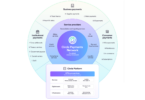Today CLS, the forex market infrastructure, announced a deal with Finastra to enable Finastra’s clients to use CLSNet, the blockchain settlement system for secondary currencies. The system is already in use by Goldman Sachs, Morgan Stanely, Bank of America, BNP Paribas, Citibank, Deutsche Bank, Morgan Stanley and others.
CLSSettlement provides its forex settlement services for the top 18 world currencies and settles about $5.5 trillion payments per day. It introduced CLSNet to enable a netting service for the other 120 or so currencies.
Rather than having to settle every transaction, creating an automated netting facility reduces risk. It means less liquidity is required in emerging currencies and also reduces the inefficiencies and potential errors from manually calculating net positions. Given that it generally costs more to settle emerging market currencies, significant savings can be made through netting.
Today’s news means CLSNet is integrated with Finastra’s Fusion Confirmation Matching Service. Finsastra has 800 corporates and buy side institutions using the service who will not need to perform any integrations because Finastra has effectively done it.
Keith Tippell, CLS’s Global head of Product said the Finastra partnership is “a good example of two major FX ecosystem service providers collaborating for the benefit of their customers and the FX market as a whole.” As with any payment related system, the key for CLSNet is achieving network effects.
The solution was originally developed with IBM using Hyperledger Fabric.
Devil’s in the detail
In terms of how netting works, one of the advantages that CLS brings is standardization. If you have two counterparties on different timezones, their daily cut-off times for settlement are unlikely to match. As an example of how CLS would helps with standard processes, is all trades will be netted before the earlier cut off times. Trades after that time won’t be netted.






